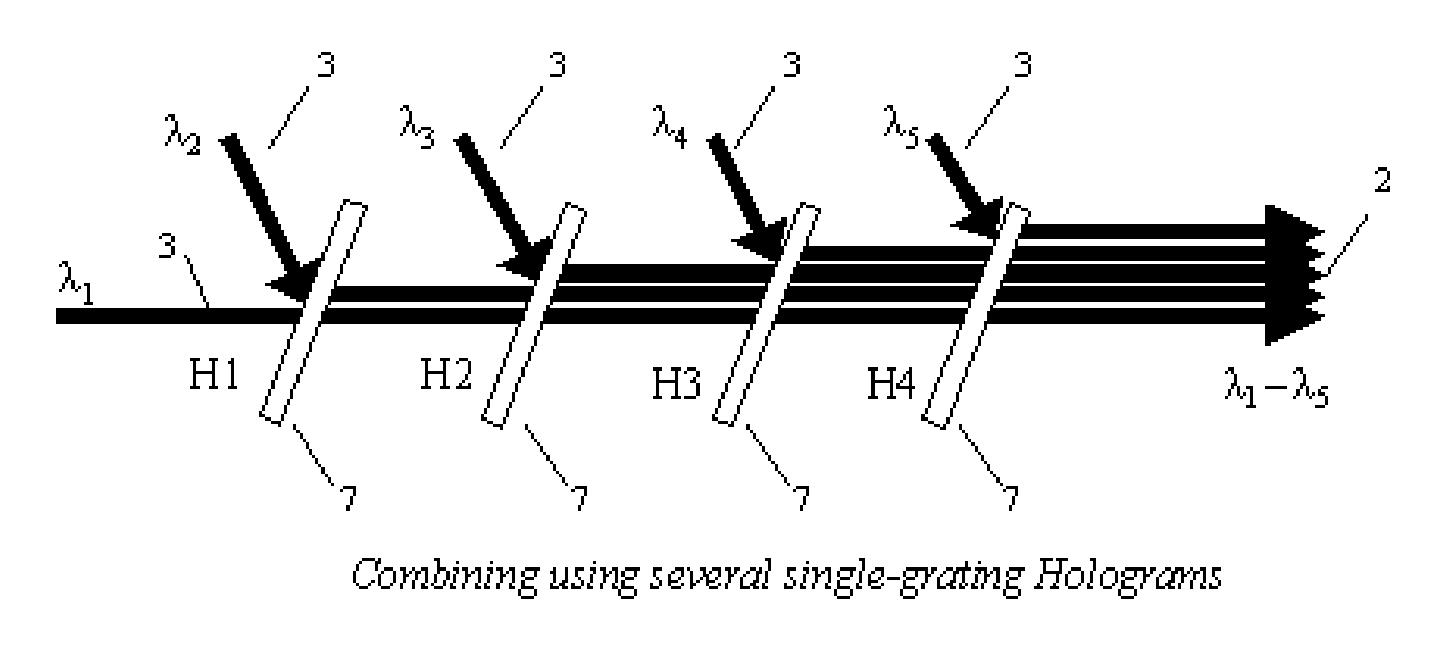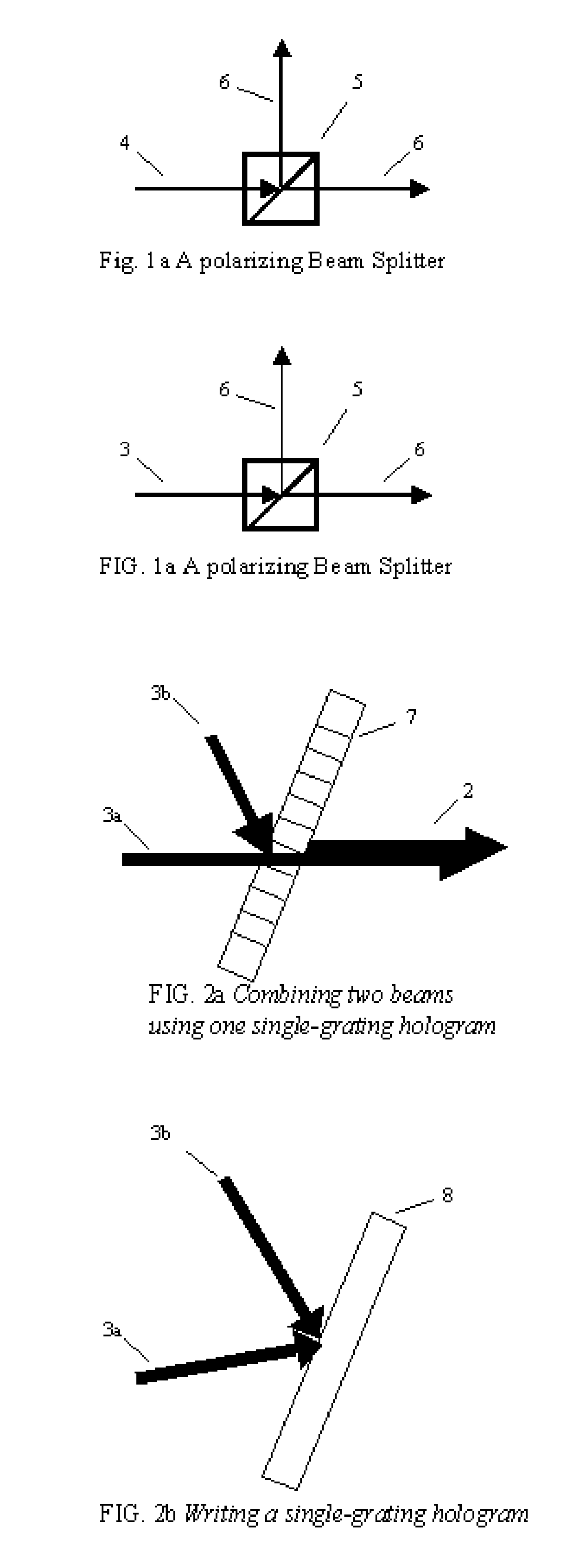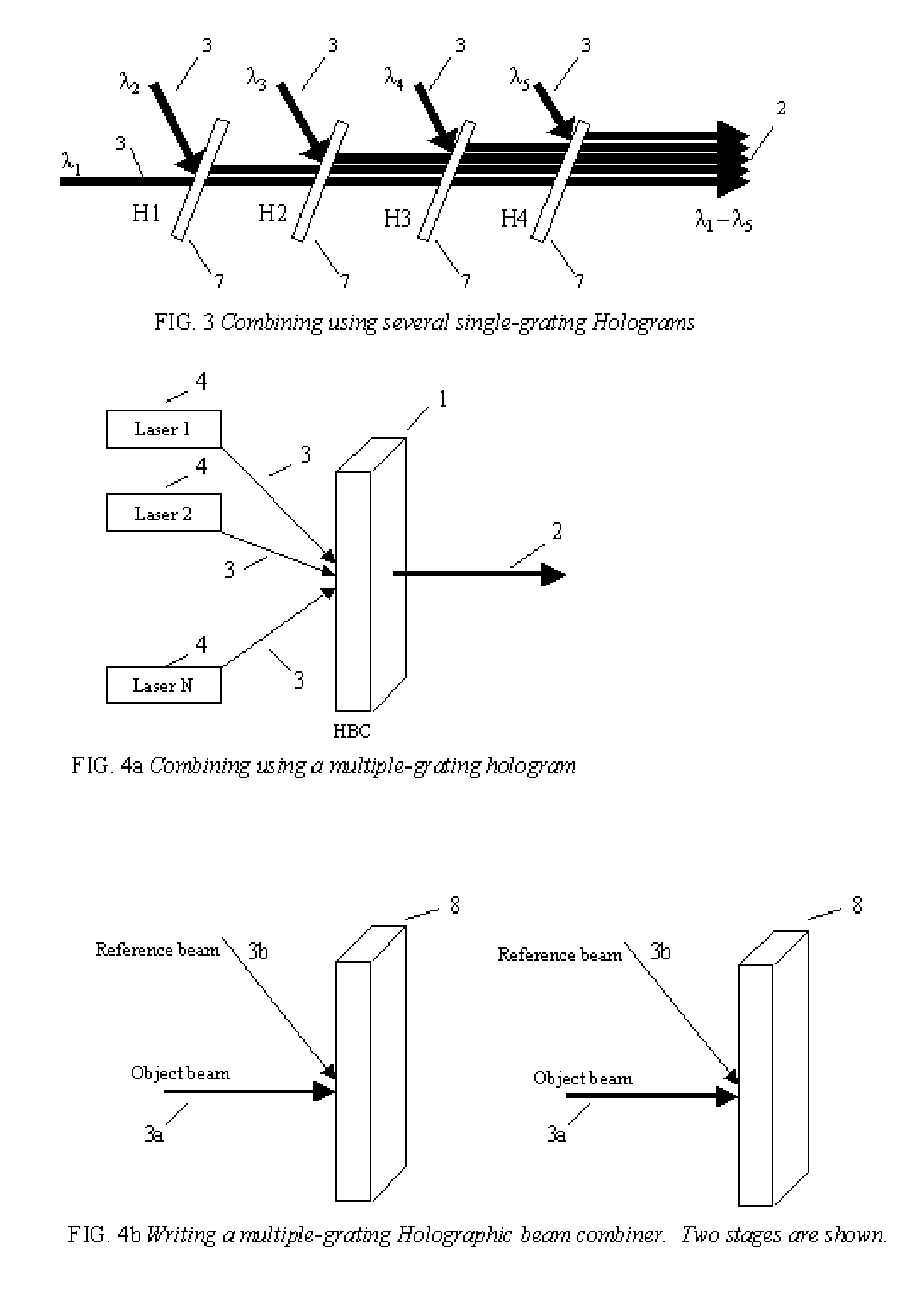Method and system for combining multiple laser beams using transmission holographic methodologies
a technology of transmission holographic and laser beam, which is applied in the direction of laser details, instruments, optical resonator shape and construction, etc., can solve the problems of much stricter incident angle and wavelength requirements, and achieve the effects of low cost, high diffraction efficiency and stable over tim
- Summary
- Abstract
- Description
- Claims
- Application Information
AI Technical Summary
Benefits of technology
Problems solved by technology
Method used
Image
Examples
Embodiment Construction
[0044] The following description is presented to enable one of ordinary skill in the art to make and use the invention and is provided in the context of a patent application and its requirements. Various modifications to the preferred embodiments will be readily apparent to those skilled in the art and the generic principles herein may be applied to other embodiments. Thus, the present invention is not intended to be limited to the embodiments shown, but is to be accorded the widest scope consistent with the principles and features described herein.
[0045] This description will focus on combining using multiple-grating holograms, although it should be noticed that this also encompasses the methods for combining using single-grating holograms.
[0046] In order to fully understand the embodiments of this invention, it is first necessary to describe the technique for writing and reading a single holograms onto a holographic substrate and then in writing multiple holograms onto the same ...
PUM
 Login to View More
Login to View More Abstract
Description
Claims
Application Information
 Login to View More
Login to View More - R&D
- Intellectual Property
- Life Sciences
- Materials
- Tech Scout
- Unparalleled Data Quality
- Higher Quality Content
- 60% Fewer Hallucinations
Browse by: Latest US Patents, China's latest patents, Technical Efficacy Thesaurus, Application Domain, Technology Topic, Popular Technical Reports.
© 2025 PatSnap. All rights reserved.Legal|Privacy policy|Modern Slavery Act Transparency Statement|Sitemap|About US| Contact US: help@patsnap.com



